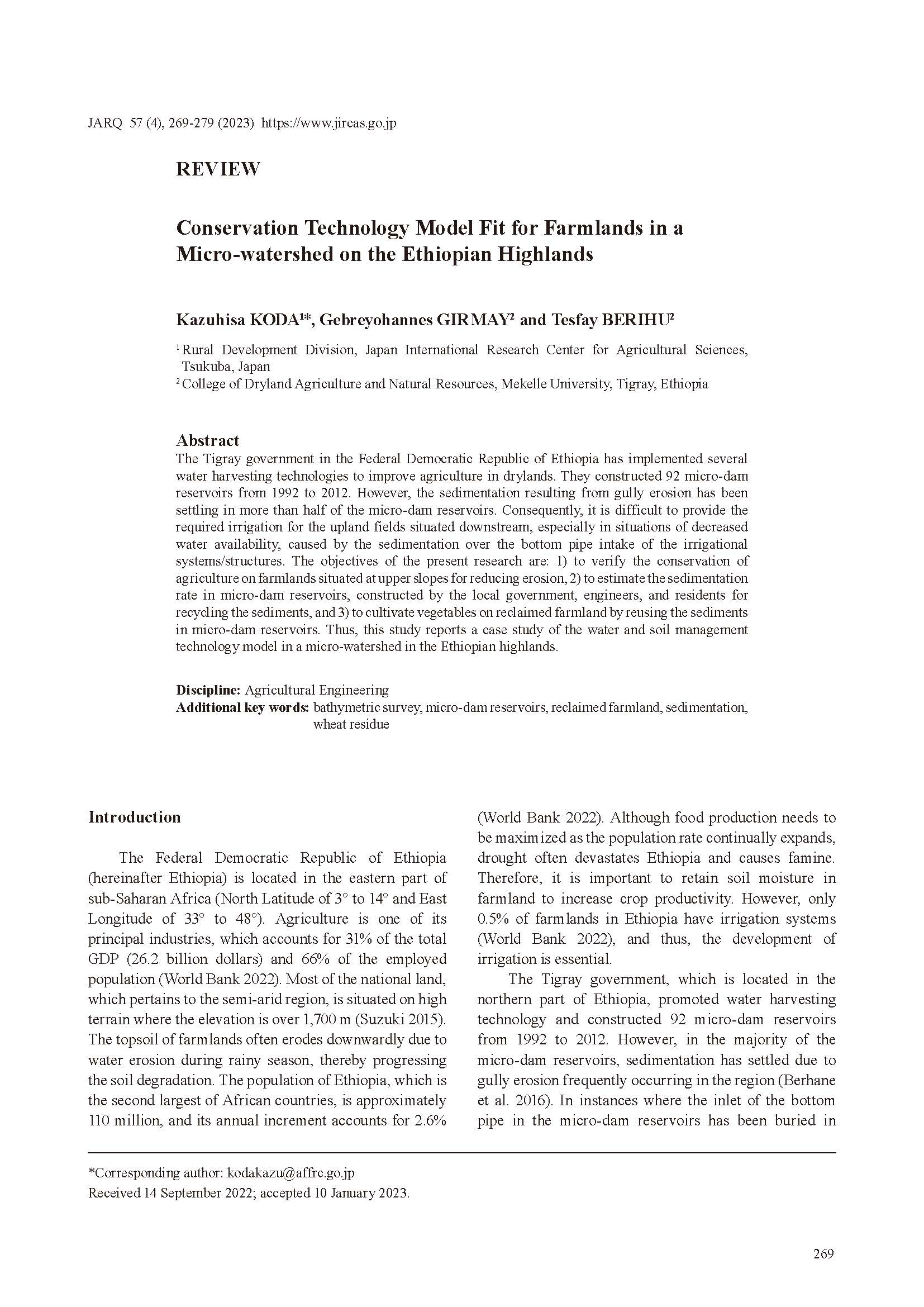Conservation Technology Model Fit for Farmlands in a Micro-watershed on the Ethiopian Highlands
Japan Agricultural Research Quarterly
| ISSN | 00213551 |
|---|---|
| NII recode ID (NCID) | AA0068709X |

Full text
jarq57-4_269-279.pdf1.53 MB
The Tigray government in the Federal Democratic Republic of Ethiopia has implemented several water harvesting technologies to improve agriculture in drylands. They constructed 92 micro-dam reservoirs from 1992 to 2012. However, the sedimentation resulting from gully erosion has been settling in more than half of the micro-dam reservoirs. Consequently, it is difficult to provide the required irrigation for the upland fields situated downstream, especially in situations of decreased water availability, caused by the sedimentation over the bottom pipe intake of the irrigational systems/structures. The objectives of the present research are: 1) to verify the conservation of agriculture on farmlands situated at upper slopes for reducing erosion, 2) to estimate the sedimentation rate in micro-dam reservoirs, constructed by the local government, engineers, and residents for recycling the sediments, and 3) to cultivate vegetables on reclaimed farmland by reusing the sediments in micro-dam reservoirs. Thus, this study reports a case study of the water and soil management technology model in a micro-watershed in the Ethiopian highlands.
| Date of issued | |
|---|---|
| Creator | Kazuhisa KODA Gebreyohannes GIRMAY Tesfay BERIHU |
| Subject | bathymetric survey micro-dam reservoirs reclaimed farmland sedimentation wheat residue |
| Publisher | Japan International Research Center for Agricultural Sciences |
| Received Date | 2022-09-14 |
| Accepted Date | 2023-01-10 |
| Available Online | |
| Volume | 57 |
| Issue | 4 |
| spage | 269 |
| epage | 279 |
| DOI | 10.6090/jarq.57.269 |
| Language | eng |
